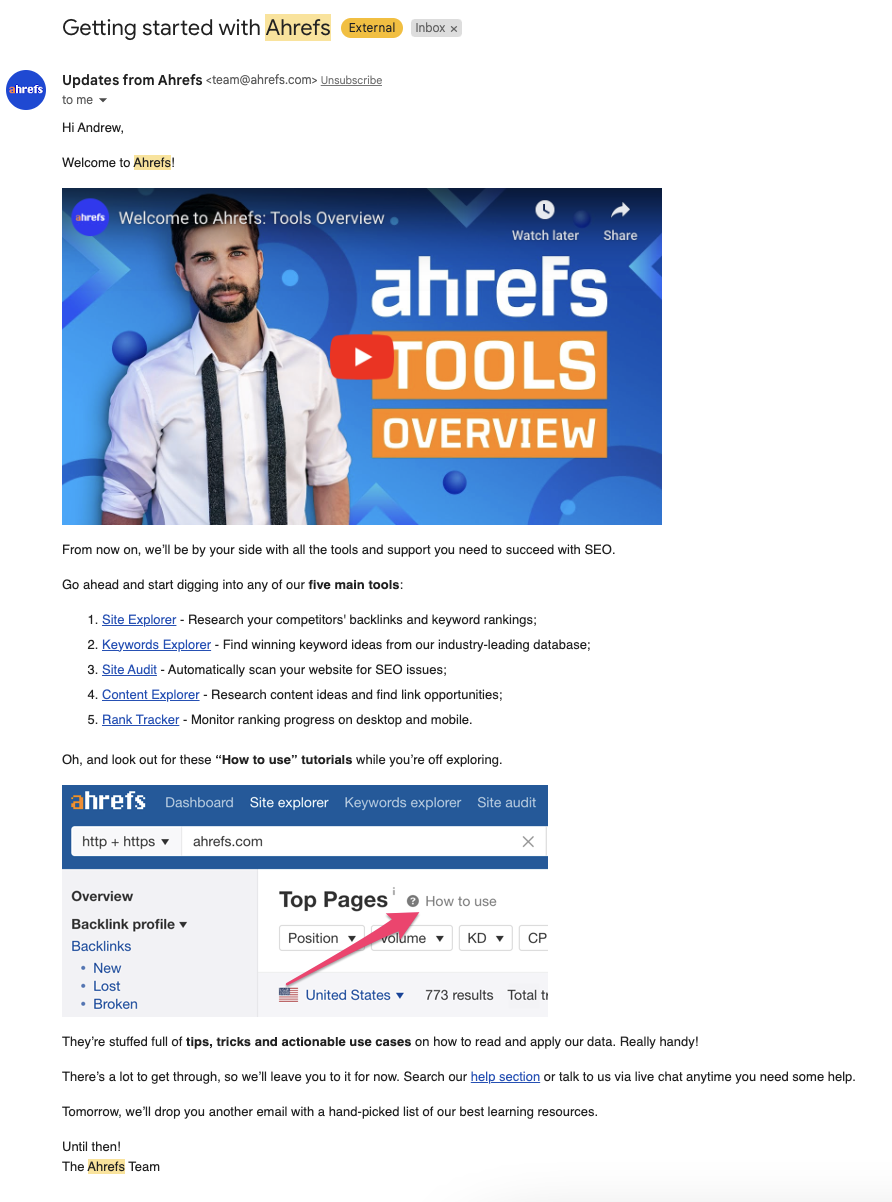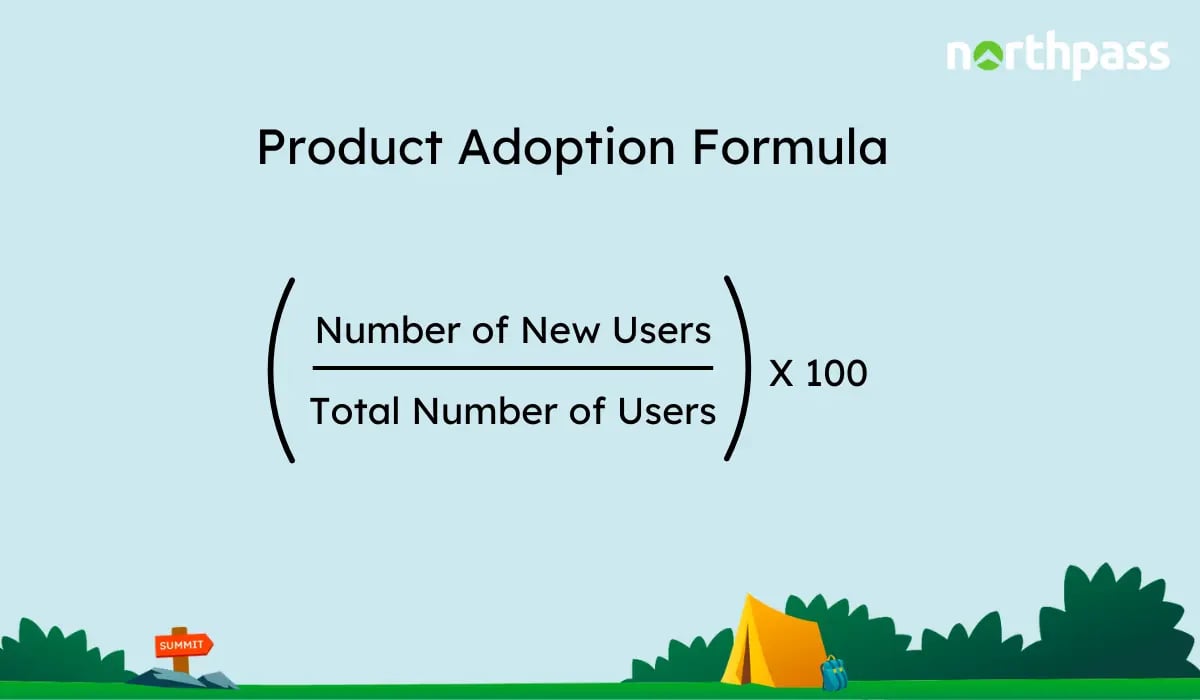Let’s start with a quiz.
It’s easy, I promise.
What’s the primary goal(s) of digital customer education and training?
- Improve the onboarding experience
- Product and feature adoption
- Sales enablement
- All of the above
The answer: F.
Digital customer education and training can help you drive product and feature adoption, increase retention, reduce support costs, help your sales reps close more deals, and boost brand advocacy.
1. Improve Onboarding
Whether you’re new to customer education or just getting started, you probably know, to some extent, that it can help improve the onboarding experience. Although the use cases and flexibility of customer education continue to increase, there’s no denying that it plays a starring role here.
For most companies, customer education at this stage of the customer journey acts as an extension of their Customer Success (CS) team, helping their Customer Success Managers (CSMs) improve the experience and make it more impactful.
You’re probably familiar with how this works, but here’s a quick story to help:
I recently purchased some SEO software to help me grow a blog I started during the pandemic. Upon signing up (initially, this was for a free trial), I received an automated email.

What I Love About the Onboarding Email from ahrefs
The email from ahrefs served two purposes:
- Say hello and thank me for my purchase
- Give me a few pieces of content I can use to help me log in for the first time — think about this as a way for them to get me to give myself a self-guided tour.
Overall, the email included links to in-depth resources about the five key tools I'd be using—Site Explorer, Keywords Explorer, Site Audit, Content Explorer, and Rank Tracker.
They also included a video, which I appreciated because I prefer them over text-based content (and I'm sure many customers do, too). Finally, the email let me know about in-app how-to guides, allowing me to learn directly in the tool.
Oh, and they let me know I'd be hearing from them the following with some more personalized content—and I did.
The result? I immediately dove into the tool and started using it. This is the perfect example of kicking off the customer onboarding experience the right way.
2. Product & Feature Adoption
Here’s where we start veering onto a path less traveled (but still leading you toward successful learning outcomes for your customers).
While customer education found its home in the onboarding world, it can have an equal impact after the sale, too. Specifically, a good customer education program can keep customers up to speed on an evolving product and how to keep succeeding.
The key word here: “keep.”
Although closing a deal or getting someone to buy something is a necessary first step, if they stop using it in the days, months and years after that, what’s the point?
There isn’t one.
Now, instead of building a relationship with this customer and growing their account over time (i.e, increasing lifetime value), you’re back to the drawing board — specifically, one that involves a whole lot of costly customer acquisition strategies.
Customer education decreases the likelihood of the above scenario because it consistently provides the knowledge and resources your customers need to realize the value of your product or service.
How Customer Education Increases Product and Feature Adoption
Digital customer education plays a massive role in product and feature adoption—here are a few ways:
- Product and feature mastery: Detailed feature-specific tutorials, videos, demos, etc. can provide customers with a comprehensive understanding of features so that they can effectively integrate them into their day-to-day workflows. .
- Personalized learning paths: Sequential content via learning paths based on use cases, user roles, and industries can help customers fully adopt the product or new feature as it relates to them.
- Feature announcements: Whenever you launch a new feature, tutorials, videos, and how-to docs outlining use cases, best practices, and usage guides can aid in understanding and encourage immediate adoption.
- Proactive problem-solving: Customers can proactively navigate product challenges independently via digital customer academies, thus eliminating the oft-frustrating process of engaging directly with CSMs and Support Reps.
Each of these ways drives product and feature adoption by ensuring your customers understand your product, its features (current and future), and how to make it all work for them.

3. Sales Enablement
We’re officially in uncharted water, but let me tell you, it’s water worth exploring.
Customer education can help your sales team close more deals, faster.
Note: There’s a prerequisite for this customer education use case: a CRM-LMS integration.
By integrating these core technologies, your sales team has access to the learning data they can use to have more informed and strategic conversations with prospects.
Here’s an example:
Pam Prospect visits your academy and takes a course on best practices.
What does this tell you? A few things about Pam:
- She may be earlier in her journey given her need to read up on best practices (we’ll assume these are more introductory best practices).
- She only got 90% of the way through the course, which could indicate that a specific topic is tripping her up.
- The fact that she’s taking a certification course could lead you to believe that she’s invested in the topic and something she’s serious about.
With this information, a seller, let’s call them Sammy Sales, can have pointed conversations that close the deal quicker. For example, they can zero in on that potential tripping point and discuss ways to help her overcome that challenge.
By removing sellers with this information, they can skit the small talk and get right to selling.
Why It’s Important to Educate Your Customers
Any business, regardless of the industry, relies on three things to stay in business:
- Closing deals
- Helping customers realize product- or service-value
- Keeping them happy (and using the product or service)
There’s no way around it. Customer education does all of those things.
If you want to learn more about how Northpass can help you launch a customer education program or take an existing one to the next level, reach out today.

.png?width=3251&height=1107&name=NP_ByGS_ColorLogo%20(1).png)


